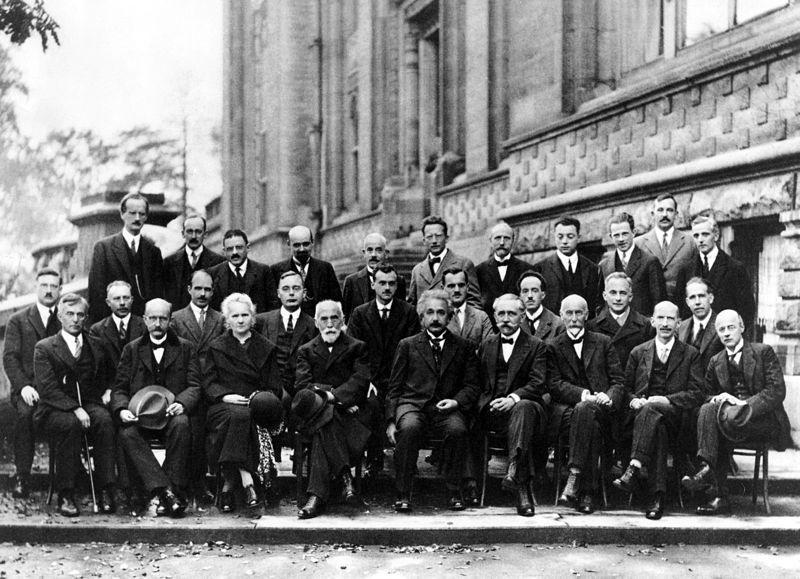
A rather bright spotlight has illuminated the underrepresentation of women in STEM (science, technology, engineering, and mathematics) in recent years, and with it, a torrent of new research, discussion, and activism targeted at leveling the playing field. It was this climate that started me thinking about how these issues affect our home base here at UC Berkeley. How many female STEM faculty do we have? What policies are in place to address this gap? How do we compare nationally? So, I did some digging. And then quite a bit more (transparency is apparently not a top priority at Berkeley). Ultimately, I was fortunate enough to have the tremendously wonderful opportunity to write about my findings for Issue 26 of the Berkeley Science Review. While this article focuses on the development of critical family-friendly policies in the UC system, there is quite a bit more story to be told.
Let’s begin.
[caption id="attachment\\_11420" align="alignright" width="300"][](http://sciencereview.berkeley.edu/wp-content/uploads/2014/05/BSR9\_61-e1399017032308.png) Source: NSF and UC Office of the President[/caption]
According to UC Berkeley’s 2013 diversity report, 70% of all ladder rank faculty are male and white. However, STEM departments continue to lag behind the rest of the university. Women comprise 21% of tenured faculty in STEM. Although the life and physical sciences disciplines are hiring new female faculty at a higher proportion than standing averages, the departments which are in the most dire need of diversity (computer science, mathematics, and engineering) are hiring significantly less women, if they hire any at all. Moreover, in the past thirty years, the total number of female tenured faculty has risen less than 20%. Considering the fact that the university consistently hires less women than are present in the STEM availability pool (while over-hiring men), parity could take decades at this pace. Notably, these trends are consistent with the national trends reported biannually by the National Science Foundation. One must wonder, who is really setting the standard?
Interestingly, women are much better represented among non-tenured faculty, a trend that has been noticed before as an increasingly favored option by women. The straights are even more dire for women of color. According to the NSF, of all STEM doctorates employed by universities and four year colleges, 4.9% were non-white women. Of all STEM faculty at Berkeley, only 6% are underrepresented minorities. Finally, graduate student data also keeps pace with NSF findings; it is important to keep in mind, however, that while an average of 40% of all STEM doctoral recipients are women, this number is skewed heavily by the life sciences division, where more than 50% of candidates are female (huzzah!).
Clearly the challenge facing equality in the ivory tower is expansive and multidimensional. A number of initiatives on campus, both at the faculty and student levels, have been developed to help provide support and community for lady scientists at Berkeley. In addition to the UC Faculty Family Friendly Edge program mentioned in “Narrowing the divide”, the university’s Office for Faculty Equity and Welfare and Division of Equity and Inclusion support and advocate for faculty from historically underrepresented groups. The Gender Equity Resource Center in Lower Sproul Plaza is dedicated to creating an inclusive experience for women and LGBTQ academics. Numerous student groups also exist in various departments to provide community and mentorship for female graduate students – these include organizations like the Society of Women in the Physical Sciences, Iota Sigma Pi, and Women in Science. Recently, there have also been some great workshops on campus target at lady scientists, such as Software Carpentry's Bootcamp at LBNL this April.
This March, Dr. Mary Ann Mason wrote an article highlighting the four key reforms she thought were necessary to continue closing the gap in STEM; 1) improved childcare options, 2) effective dual-career policies, 3) childbirth accommodations, 4) compliance with Title IX. These action items are excellent, and it is in a similar vein that I hope to close with a few suggestions for what we as individuals can do to help improve our culture and make it inclusive for all.
Be an advocate and/or ally. Educate yourself about inequality issues that face certain groups and act on this knowledge. Understand the implicit biases that affect us all and conscientiously work to counteract them.
Be proactive. Stand up if you see someone being discriminated against. Help mentor students, get involved with outreach programs, or work in small focus groups.
Communicate. Listen to others perspectives and offer up your own. Inequality of the sexes is not just a woman’s issue – it affects all of us. Support your peers and encourage them.
Got any other suggestions? Hit us up in the comments and remember to pick up a copy of Issue 26!





